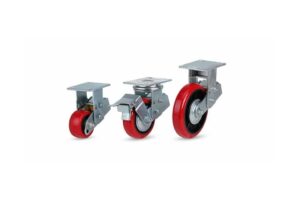A crimped connector is a good choice when a project needs reliable connections. They can be used as screw terminals, blades, rings, spades, or butt splice connectors.
Crimped connections are more flexible, heat-resistant, and vibration-resistant than soldered ones. They also resist the degradation of filler metals.
Unfortunately, crimping requires tools specific to the installed contacts, which can be expensive. Moreover, the crimping process must be adequately performed to achieve a reliable connection.
Table of Contents
User-Friendly
Specialist electric vehicles are put through their paces in harsh environments, which puts the car’s components under significant stress. This makes the use of quality crimps essential.
Crimping involves deforming and compressing two pieces of metal to create a secure and durable connection. It’s essential to ensure this is done correctly to guarantee the integrity of wire connections.
However, problems with crimps can go undetected until later stages of production and cause costly production delays. Automated crimping machines offer protocols and monitors like crimp force monitoring and seal monitoring to reduce such issues. These provide real-time visibility and help manufacturers detect errors early in the crimping process. This improves production consistency and product quality. It also increases productivity.
Low-Temperature
Technicians can install connectors much more quickly with crimp connections than soldered connections. The crimp process is also safer than soldering and can prevent potential fires.
Crimping can create a gas-tight connection that has low electrical resistance. It’s especially beneficial for cabling projects that require high current relationships, such as digital video, computer, and network cabling.
Using a premium portable crimper with various crimping tools allows production experts to choose the best crimp solutions Charlotte NC, for each project’s unique needs. These tools offer a range of protocols and monitors, including crimp force monitoring, seal monitoring, and splice monitoring, to identify and address any issues with the crimp. They can also be equipped with a non-destructive pull testing capability that eliminates the need for destructive tests.
Low-Resistance
The crimping process creates a gas-tight connection that prevents oxygen and moisture from reaching the metal of both the terminal and wire. This reduces the risk of corrosion and enables a high degree of electrical conductivity.
Crimping also allows hand tools that are more easily maneuvered than soldering equipment. This makes crimping a viable option for operators in remote or enclosed work environments.
Unlike other methods of connecting wires, crimping does not require an external power source and provides a more durable connection than soldered joints. The crimping process also requires less maintenance than soldering. Crimping can also be faster than other termination techniques, allowing manufacturers to meet tight production timelines. Moreover, training assemblers on crimping is easier than teaching them how to solder.
High-Strength
Crimps create a gas-tight connection that prevents oxygen and moisture from corroding the connector’s metals. This is crucial to a wire harness’s performance and longevity, especially in harsh environments.
The specialized tooling required for crimping produces a lower hand force than soldering tools, making them ideal for workers operating in complex or enclosed conditions. Additionally, crimping is a safer alternative to soldering because it does not use high temperatures or potentially dangerous materials.
Ensure the quality of your crimp connections with a portfolio of positive stop applicators. They feature built-in fitting locators and collet cages that are color-coded to indicate dash size, all designed to make crimping easier. Learn more about the benefits of these applicators and see how they work in this video.
Corrosion-Resistant
High-quality solderless crimp connections resist corrosion because they are sealed with a robust and single joint that prevents the penetration of moisture and oxygen. This makes them perfect for use in harsh environments.
The crimping process deforms metals enough to break the material’s yield point but not too much. This deformation gives the crimped connection a slight spring back, which helps to keep the crimp secure under thermal cycling and vibration.
Additionally, these crimps are gas-tight and won’t wick, ensuring a good electrical connection. They can be used on solid or stranded wires and are made from copper with tin plating for corrosion resistance. This makes them perfect for industrial applications such as battlefield networks and avionics in aircraft and UAVs, Ethernet switches, military manpacks, and military C4ISR equipment.




